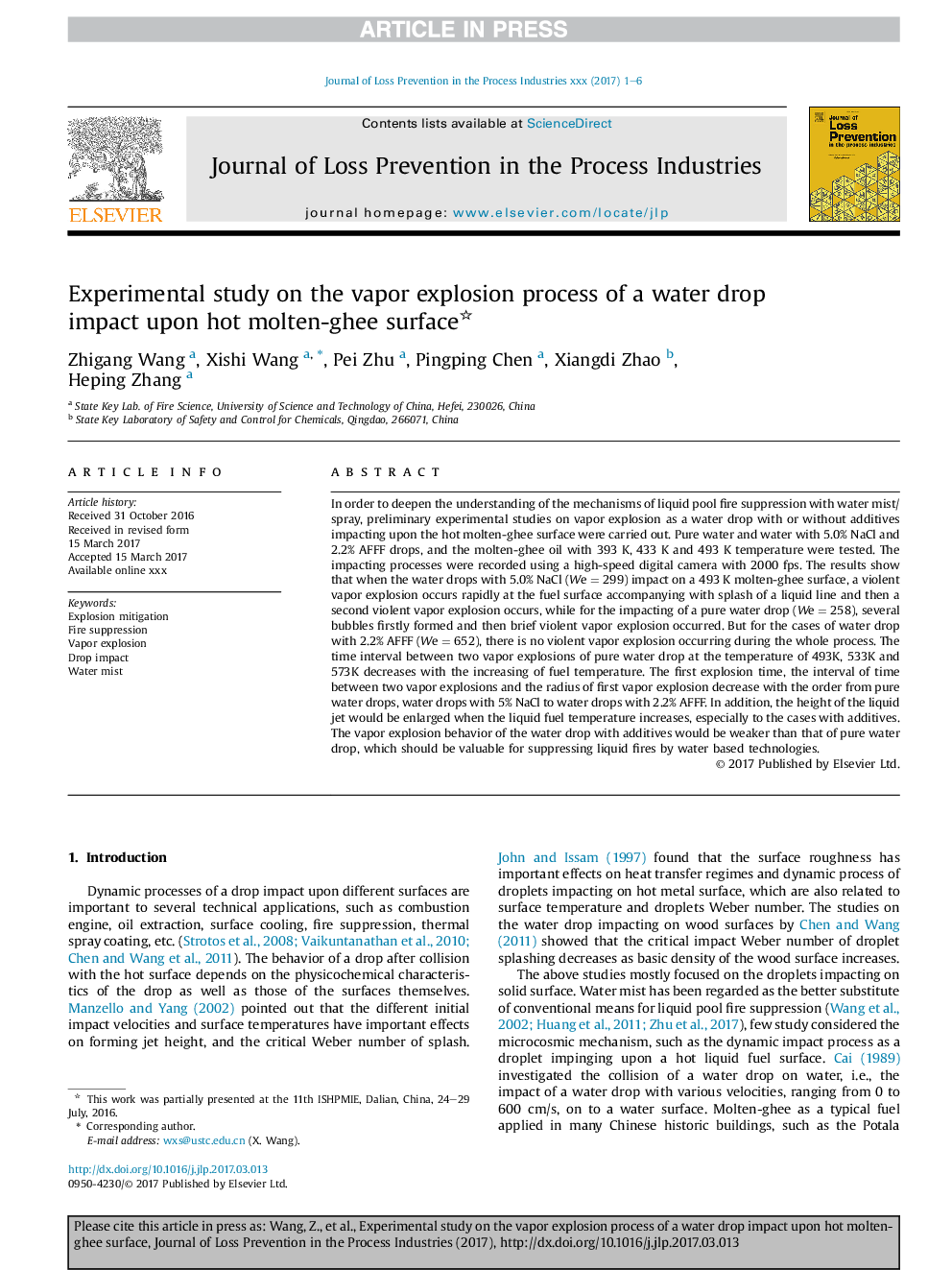| Article ID | Journal | Published Year | Pages | File Type |
|---|---|---|---|---|
| 4980285 | Journal of Loss Prevention in the Process Industries | 2017 | 6 Pages |
Abstract
In order to deepen the understanding of the mechanisms of liquid pool fire suppression with water mist/spray, preliminary experimental studies on vapor explosion as a water drop with or without additives impacting upon the hot molten-ghee surface were carried out. Pure water and water with 5.0% NaCl and 2.2% AFFF drops, and the molten-ghee oil with 393 K, 433 K and 493 K temperature were tested. The impacting processes were recorded using a high-speed digital camera with 2000 fps. The results show that when the water drops with 5.0% NaCl (We = 299) impact on a 493 K molten-ghee surface, a violent vapor explosion occurs rapidly at the fuel surface accompanying with splash of a liquid line and then a second violent vapor explosion occurs, while for the impacting of a pure water drop (We = 258), several bubbles firstly formed and then brief violent vapor explosion occurred. But for the cases of water drop with 2.2% AFFF (We = 652), there is no violent vapor explosion occurring during the whole process. The time interval between two vapor explosions of pure water drop at the temperature of 493K, 533K and 573K decreases with the increasing of fuel temperature. The first explosion time, the interval of time between two vapor explosions and the radius of first vapor explosion decrease with the order from pure water drops, water drops with 5% NaCl to water drops with 2.2% AFFF. In addition, the height of the liquid jet would be enlarged when the liquid fuel temperature increases, especially to the cases with additives. The vapor explosion behavior of the water drop with additives would be weaker than that of pure water drop, which should be valuable for suppressing liquid fires by water based technologies.
Related Topics
Physical Sciences and Engineering
Chemical Engineering
Chemical Health and Safety
Authors
Zhigang Wang, Xishi Wang, Pei Zhu, Pingping Chen, Xiangdi Zhao, Heping Zhang,
